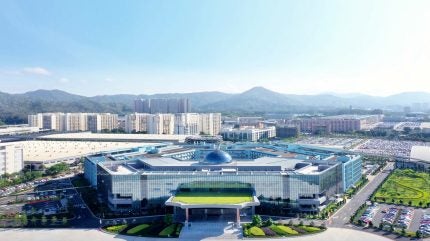
Chinese automakers reported 1.395 million new energy vehicle (NEV) sales in August 2025, including exports, representing a 27% increase over the same month last year, according to data released by the China Association of Automobile Manufacturers (CAAM). Nevertheless, the segment, comprising plug-in-hybrid vehicles and zero-emission vehicles such as battery electric vehicles (BEVs) and limited numbers of hydrogen fuel cell electric vehicles (FCEVs), has seen growth slow significantly in recent months – most notably in the domestic market.
The recent growth slowdown comes despite generous government incentives and heavy discounting by vehicle manufacturers and dealers.

Discover B2B Marketing That Performs
Combine business intelligence and editorial excellence to reach engaged professionals across 36 leading media platforms.
China’s NEV industry has seen tremendous growth in recent years, with global sales surging by over 35% to 12.9 million units in 2024, including a 7% rise in exports to 1.28 million units – with NEVs accounting to around 41% of total vehicle output in the country. This follows a 38% rise to 9.495 million units in 2023, with NEVs accounting for 32% of total vehicle output.
The segment’s growth has been driven mainly by dominant players such as BYD and Geely, as well as a large number of NEV startups such as Leapmotor, Li Auto, and Xpeng, which have established significant operations in the last ten years. Mainstream state-owned manufacturers such as SAIC Motor, GAC Group, GWM and Chery are looking to catch up, having launched new NEV brands in the last two years and establishing new partnerships with local technology giants such as Huawei.
BYD, in particular, has seen phenomenal growth in recent years, including a 41% surge in global sales to 4.3 million units in 2024, overtaking SAIC Motor as the country’s largest vehicle manufacturer. More recently, Geely’s NEV sales almost doubled to over 1 million units in the first eight months of 2025.
Total NEV sales increased by 37% year-on-year to 9.622 million units in the first eight months of 2025, accounting for over 45% of global deliveries by the country’s automakers, according to the CAAM data. Battery electric vehicle (BEV) sales surged by 46% to 6.154 million units in this period, while plug-in hybrid vehicle (PHEV) sales rose by just 22% to 3.468 million units.
Excluding exports, domestic NEV sales rose by 31% to 8.091 million units, with growth slowing sharply in the last few months following a strong first quarter, as sales in August grew by just 18% to 1.171 million units.
However, separate retail data released by the China Passenger Car Association shows passenger NEV sales rose by just 7.5% to 1.1 million units last month, with BEV sales rising by 17% to 686,000 units while passenger PHEV sales actually declined, by almost 7% to 414,000 units. This indicates a significant level of market saturation in the short-term, despite the availability of generous sales incentives.
The central government currently provides incentives worth up to CNY 20,000 (US$ 2,800) to buyers trading in their old polluting vehicles for much cleaner NEV models. NEV buyers are also exempted from the 10% sales tax, while additional incentives are offered by regional governments. Vehicle manufacturers also offer heavy discounts and other incentives, as part of their fierce price which has been going on for almost two years.
Earlier this year, the central government confirmed that it will continue to fund its current subsidy programs until the end of 2025, but has ordered local vehicle manufacturers to rein in their excessive discounting, which is seen as damaging the profitability and prospects of the country’s smaller, less established electric vehicle (EV) brands.
The government is expected to reduce its NEV subsidies next year, including cutting scrappage incentives and offering a sales tax discount instead of full exemption. It is also encouraging greater adoption of NEVs in public transportation, including taxis and buses, to help meet its targets. While an announcement has yet to be made, any significant cuts in government incentives, if confirmed, would likely put significant pressure on China’s domestic NEV market from next year. Many of the smaller NEV startups, which are already struggling under the fierce price war, will inevitably be impacted the most in such an environment – increasing the prospect of a cycle of industry restructuring.
Meanwhile, the Chinese government has been actively encouraging the country’s automakers to step up their overseas expansion, to help them scale up their operations and take on established global automakers in other markets. New assembly plants are being set up across most major regional markets, including in Asia, Europe, South America, the Middle-East and Africa, while exports of built-up vehicles from China have surged by 87% to 1.531 million units year-to-date.






